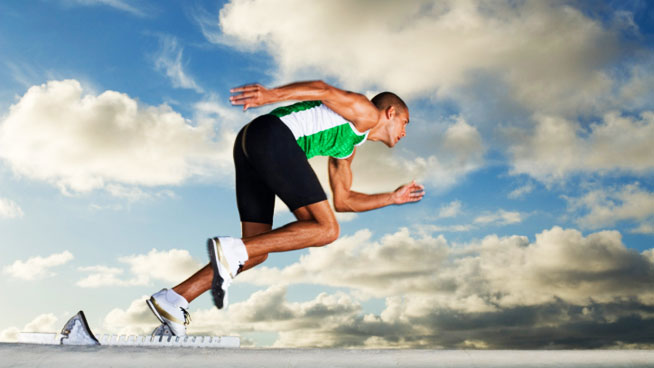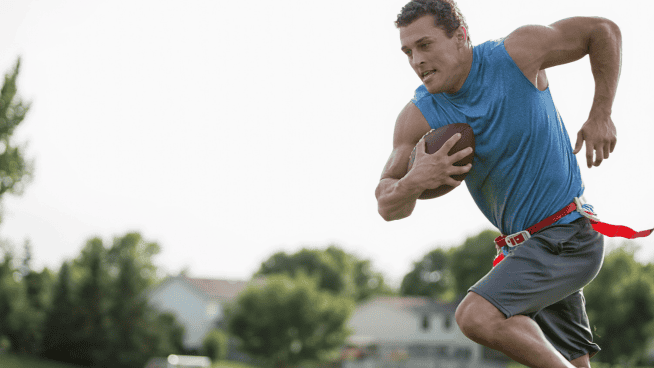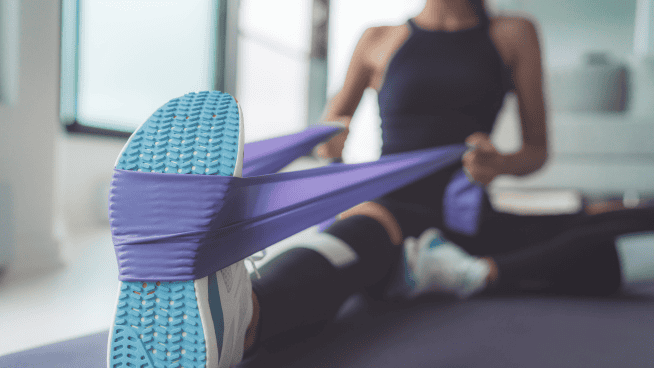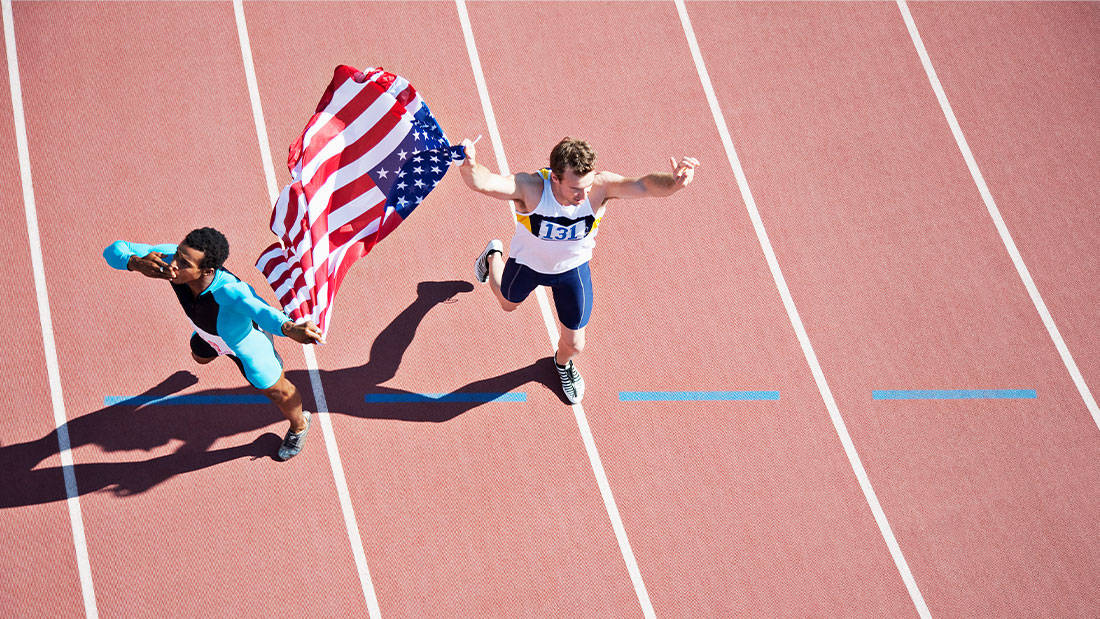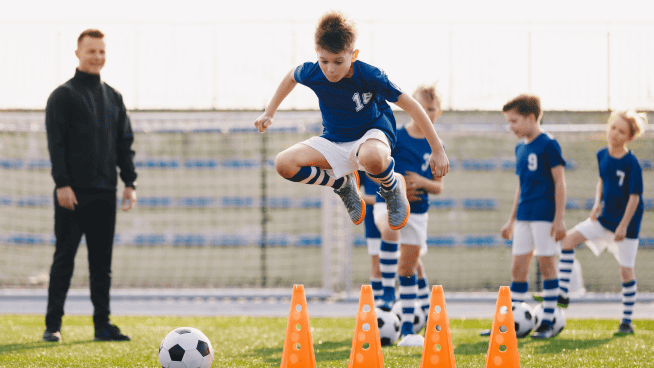Tips and Best Weight Room Exercises for Track Athletes
Track athletes benefit from proper weight training as much as any athlete. However, most track athletes don’t spend nearly as many hours in the gym as they do on the track. The gym is where you develop horsepower for the track, which is critical for improving your performance.
Here’s a simply analogy: Take two of the same cars and race them side by side. They will be very close every time. Take one to the garage, add another 100 horsepower and put it back on the track. The next race won’t be close.
The human body is no different. The more power you can develop in the weight room, the faster you’ll run.
But, you cannot just go into the gym and start banging out sets of machine exercises, thinking they will make you faster. Not all exercises are created equal, so proper exercise selection is critical. That is why many top track athletes have separate strength coaches in addition to their running and biomechanics coaches.
I’ve had the opportunity to work with many elite track athletes. Here are a few tips and the exercises we’ve found that are most successful.
Focus on Your Backside
Focus a large percentage of your training on your posterior chain, which is the hamstrings, glutes, hips and spinal erectors. Those are the most important muscles for running and jumping. The quads are also important, but they play second fiddle to training the posterior chain.
Work All Aspects of Strength
There are three types of strength—absolute strength, repetition strength and speed strength—and you must incorporate all three into your training. Lifting a heavy weight for three or fewer reps will build absolute strength. For repetition strength, use a moderate weight or reps of 12 up to 20. And for speed strength, work between 42 and 50 percent of your max, moving as fast as possible over two to three reps.
Do Single-Leg Exercises
Most people have a dominant side, but it’s very important that your legs are equally strong. If one side is weaker, you may actually slow yourself down when striding with that leg during a sprint.
Best Strength Exercises for Track Athletes
Now that you understand the fundamentals of weight training for track and field, here are my favorite exercises.
Box Squat
This is one of the best, if not the best move to develop the muscles on the backside of your body, which will help you run faster.
Bulgarian Split-Squat
Bulgarian Split-Squats will develop single-leg strength and torch your glutes.
Hamstring Work
There’s no single exercise here, because you need to work your hamstrings from all different angles. Our favorite exercises are Quarter Good Mornings and Deadlifts (conventional, Sumo and from the rack).
Those are a few hot tips to increase your linear speed. You must continue to work your sport-specific skills and drills out on the track. Follow the tips in conjunction with your track work. You need to work all aspects to develop completely.
Read More:
[cf]skyword_tracking_tag[/cf]RECOMMENDED FOR YOU
MOST POPULAR
Tips and Best Weight Room Exercises for Track Athletes
Track athletes benefit from proper weight training as much as any athlete. However, most track athletes don’t spend nearly as many hours in the gym as they do on the track. The gym is where you develop horsepower for the track, which is critical for improving your performance.
Here’s a simply analogy: Take two of the same cars and race them side by side. They will be very close every time. Take one to the garage, add another 100 horsepower and put it back on the track. The next race won’t be close.
The human body is no different. The more power you can develop in the weight room, the faster you’ll run.
But, you cannot just go into the gym and start banging out sets of machine exercises, thinking they will make you faster. Not all exercises are created equal, so proper exercise selection is critical. That is why many top track athletes have separate strength coaches in addition to their running and biomechanics coaches.
I’ve had the opportunity to work with many elite track athletes. Here are a few tips and the exercises we’ve found that are most successful.
Focus on Your Backside
Focus a large percentage of your training on your posterior chain, which is the hamstrings, glutes, hips and spinal erectors. Those are the most important muscles for running and jumping. The quads are also important, but they play second fiddle to training the posterior chain.
Work All Aspects of Strength
There are three types of strength—absolute strength, repetition strength and speed strength—and you must incorporate all three into your training. Lifting a heavy weight for three or fewer reps will build absolute strength. For repetition strength, use a moderate weight or reps of 12 up to 20. And for speed strength, work between 42 and 50 percent of your max, moving as fast as possible over two to three reps.
Do Single-Leg Exercises
Most people have a dominant side, but it’s very important that your legs are equally strong. If one side is weaker, you may actually slow yourself down when striding with that leg during a sprint.
Best Strength Exercises for Track Athletes
Now that you understand the fundamentals of weight training for track and field, here are my favorite exercises.
Box Squat
This is one of the best, if not the best move to develop the muscles on the backside of your body, which will help you run faster.
Bulgarian Split-Squat
Bulgarian Split-Squats will develop single-leg strength and torch your glutes.
Hamstring Work
There’s no single exercise here, because you need to work your hamstrings from all different angles. Our favorite exercises are Quarter Good Mornings and Deadlifts (conventional, Sumo and from the rack).
Those are a few hot tips to increase your linear speed. You must continue to work your sport-specific skills and drills out on the track. Follow the tips in conjunction with your track work. You need to work all aspects to develop completely.
Read More:
[cf]skyword_tracking_tag[/cf]
